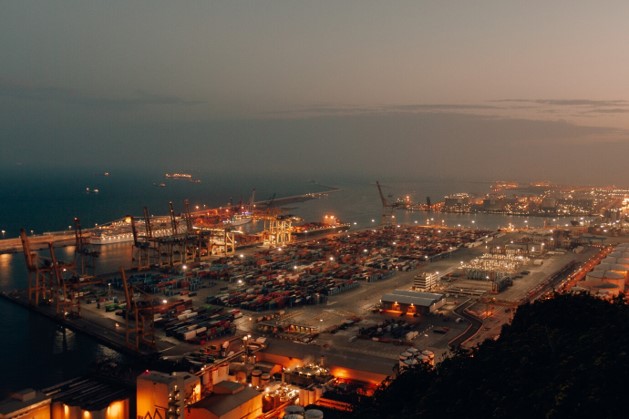Port congestion is a major challenge in supply chain management (SCM) that can significantly impact your company’s operational efficiency. When a port gets congested, the process of unloading and loading goods slows down, and the effects can be widespread, affecting everything from shipping schedules to operational costs. In this article, we’ll explore port congestion in detail, including its causes, impacts on SCM, and strategies you can use to manage and mitigate this issue.
Before we go further into this topic, don’t forget to follow my LinkedIn account. You’ll get more helpful insights on supply chain management there.
Table of Contents
What is Port Congestion?
Port congestion occurs when a port becomes overcrowded, causing the number of ships waiting to unload or load goods to exceed the port’s capacity. This leads to slower unloading processes and a backlog of ships at the port. In SCM, ports are crucial points where international goods enter or leave a country. When a port is congested, it can disrupt the entire supply chain, affecting everything from shipment timings to operational costs.
Understanding port congestion is essential in SCM because ports act as critical gateways for international trade. When a port is congested, it can disrupt your entire supply chain. Delays in receiving raw materials can halt production, while delays in delivering finished products can damage customer relationships. Managing and mitigating port congestion is key to maintaining smooth operations and customer satisfaction.
Causes of Port Congestion
Several factors contribute to port congestion, and understanding these can help you prepare and manage congestion more effectively.
Increased global trade volume is one major cause. As global economies grow, demand for goods and services rises, leading to more ships entering ports. If a port can’t handle this surge in volume, congestion will occur.
Extreme weather and natural disasters also contribute to port congestion. Storms, floods, or other severe weather conditions can disrupt port operations, causing ships to wait longer outside the port. This not only slows down the unloading process but can also lead to a backlog that takes weeks to resolve.

Operational disruptions at the port, such as worker strikes or equipment failures, can cause congestion. When a port isn’t operating at full capacity, waiting times for unloading increase, leading to a buildup of ships and containers. This is often due to a lack of investment in port infrastructure or poor management.
Government policies and new regulations can also play a role. Stricter regulations or changes in tariffs can slow down processes at the port, causing ships to wait longer to complete required formalities. In some cases, unsupportive government policies can delay infrastructure development, worsening congestion.
You might also like:
- What Repeated Mistakes in Supply Chain Management Can Teach Us
- Why Supply Chain Management is All About People
Impact of Port Congestion on Supply Chain Management
Port congestion can have a broad impact on SCM, affecting various aspects from shipping to costs and efficiency. Here are some key impacts you might experience.
Shipping delays are a direct consequence of port congestion. When ships are delayed at the port, the goods they carry don’t reach their final destinations on time. This can disrupt your production schedule, especially if key raw materials are delayed. Delays in delivering finished products can also affect customer satisfaction and damage business relationships.
Increased operational costs are another common impact. Delays at the port can lead to extra costs, such as storage fees, late penalties, and expenses to expedite shipments after they leave the port. These additional costs can reduce your profit margins and make your company less competitive in the market.
Supply chain disruptions are a significant impact as well. Delays at the port can create instability in your raw material supply, disrupting production and distribution. This can result in product shortages in the market, reducing revenue and market share for your company.
Decreased efficiency and productivity is another effect. Port congestion reduces operational efficiency, forcing you to spend more time and resources dealing with issues caused by congestion. This reduces overall productivity and hampers your company’s performance.
Strategies for Managing and Mitigating Port Congestion
Although port congestion is hard to predict, there are several strategies you can use to manage and reduce its impact. Here are some approaches to consider.
Diversify routes and ports is a key strategy. If a particular port is congested, consider rerouting shipments to other, less crowded ports. You can also use alternative shipping routes to avoid congested ports. For example, smaller ports or those in different locations can be alternatives to reduce pressure on major ports.
Enhancing collaboration and communication is also important. Working closely with logistics providers, shipping agents, and port authorities can help you get the latest information on port conditions and plan effective mitigation steps. Using technology to obtain real-time data on port conditions and shipping routes will also be very helpful for making quicker and more accurate decisions.
Utilize technology and data analytics is another step. By using data analytics, you can better predict and respond to port congestion. Historical analysis and trends can help with better planning, while advanced cargo tracking systems allow you to monitor the location and status of your shipments in real-time. This helps you take timely actions to reduce the impact of port congestion.
Have a contingency plan as well. Develop and implement emergency plans to handle disruptions in the supply chain. This might include using alternative transport methods like air or land, even if they are more expensive, or maintaining sufficient safety stock to cover for delays. Having a well-organized contingency plan will help you handle emergencies more effectively.
You might also like:
- Top 10 Common Conflicts Between PPIC and Sales and How to Resolve Them
- The Dual Nature of Automation in Supply Chain Management
Case Study: Port Congestion at the Port of Los Angeles and Its Impact
To illustrate the impact of port congestion, let’s look at the case of the Port of Los Angeles, one of the busiest ports in the world. In 2021, the port experienced severe congestion due to a surge in trade volume driven by the post-pandemic economic recovery. Thousands of containers piled up at the port, waiting to be unloaded and shipped to various destinations across the United States.
This congestion not only affected companies relying on this port but also had a global impact on the supply chain. Delays from the Port of Los Angeles led to shortages in various sectors, including electronics, automotive, and clothing. Additionally, shipping costs rose sharply as companies had to seek more expensive alternatives, such as air freight, to ensure timely delivery.
This situation highlights the critical role ports play in the global supply chain and the significant impact port congestion can have. Many companies began exploring ways to reroute shipments to other ports or enhance their use of technology to improve operational efficiency. Some even accelerated the adoption of new technologies, such as automation and artificial intelligence, to reduce reliance on congested ports.
The Future of Port Congestion and Its Implications for SCM
Looking ahead, port congestion is likely to remain a significant challenge in supply chain management. Growing global trade, combined with climate change and geopolitical disruptions, will continue to put pressure on major ports worldwide. Therefore, companies must keep innovating and developing new strategies to manage these risks.
Technology will play a crucial role in tackling port congestion in the future. Advances in automation, artificial intelligence, and the Internet of Things (IoT) will help ports improve operational efficiency and reduce wait times for ships. Additionally, big data and analytics will help you predict and respond to congestion more quickly and accurately.
On the other hand, closer collaboration between governments, port authorities, and the private sector will also be key in managing port congestion going forward. Supportive policies and investment in better port infrastructure will be essential to ensure that ports can handle future trade volume surges.
Conclusion
Port congestion is a complex issue that requires a multifaceted approach to manage effectively. By employing strategies such as diversifying routes, improving collaboration, using technology, and having contingency plans, you can mitigate the impact of port congestion and keep your supply chain running smoothly.
Port congestion is not just a logistical problem but a strategic one that can affect your business performance overall. Therefore, it’s important to stay vigilant and adapt your strategies to face these challenges. With proper preparation and the use of technology, you can address port congestion and minimize its effects, allowing your company to thrive in an increasingly competitive global market.
I hope you find it helpful!
Please share this article with your colleagues so they can also benefit. For more insights on supply chain management, follow my LinkedIn account. You’re free to use all articles on this blog for any purpose, even for commercial use, without needing to give credit.
 by
by 
